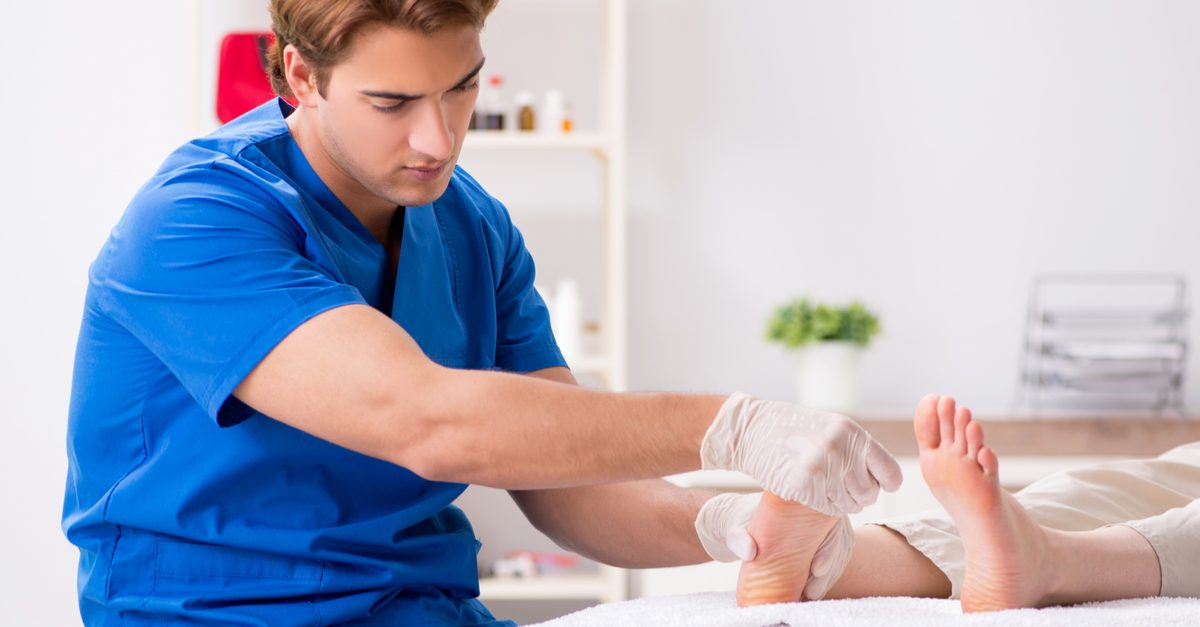Many podiatrists already dispense wound care supplies or durable medical equipment (DME) from their offices for patient use. However, if you are one who simply writes a prescription then sends your patients to a DME provider, you are missing out on a considerable source of revenue for your practice.
Let’s take a look at how you can increase revenue and patient satisfaction just by taking advantage of your DME license.
MAKING YOUR DME LICENSE WORK FOR YOU AND YOUR PATIENTS
Having wound care options and DME supplies available in the office is a great service to the patient. Patients prefer to get as much done in one appointment as possible, saving time and relieving stress. As opposed to sending them elsewhere to wait for additional services, you provide the service and collect the revenue. It really is that simple.
Another benefit of your practice distributing the DME is that you have control over the quality of equipment provided. There are many variances from company to company on each piece of equipment. Stocking a quality product ensures that your patients are getting exactly what you want them to have rather than a “knockoff’ version of what you want.
Podiatrists have an extensive background and training in biomechanics, as well as a complete understanding of diabetes and its complications in the lower extremities, which often results in the need to provide patients with immediate immobilization. That alone demonstrates that DME is one of the more important offerings that you can extend to those you treat.
Benefits of DME for patients include the following:
Ease of use
Patient acceptability/understanding
Maximized healing/outcomes
Instant immobilization when needed
DME has a place in the treatment plan for many of the conditions treated on a daily basis in your office. Unlike services or procedures that are diagnosis driven, DME must simply meet medical necessity. Practically speaking, integrating DME into existing treatment protocols will improve and diversify your practice revenue stream and increase patient satisfaction.
HOW TO OBTAIN YOUR DME LICENSE
In order to furnish durable medical equipment, prosthetics, orthotics, and supplies (DMEPOS), you must obtain a durable medical equipment regional carrier (DMERC) accreditation. This can be a lengthy process, so be sure to start early.
There are certain supplier and quality standards that must be met in order to obtain your DMERC accreditation and to be eligible to have Medicare billing privileges. Understanding the DMEPOS Quality Standards and involving all staff in the process will help you meet the DMEPOS Quality Standards and obtain accreditation.
1. Pre-application process
Contact an accreditation organization (AO) and get information about their process.
Review and apply to the AO of your choice.
Your AO will help you determine if any changes will be required to ensure you’ve met the accreditation standards.
You will apply after all changes have been implemented.
2. Application process
Submit a completed application to the AO with all required supporting documentation.
The AO reviews the application and documentation. The average review period is 4-6 months.
3. On-site survey
The AO conducts an unannounced on-site survey.
The AO determines your accreditation based on the data that you have submitted and the on-site survey results.
AOs report accreditation information to the National Supplier Clearinghouse (NSC).
You may also report accrediting information to the NSC on your enrollment application.
**Remember that your AO will conduct an unannounced on-site survey every 3 years.**
There are significant ramifications for noncompliance when it comes to acquiring and maintaining accreditation. Taking the time to complete accreditation through a reputable AO is crucial to ensure that you are in compliance with all rules and regulations within your state.
COMMON DMERC BILLING MISTAKES
Many HMOs require the use of a preferred vendor for DMEPOS equipment. Being aware of this before prescribing can keep you from violating your HMO contract.
However, there are often provisions written into the HMO contract for “urgent” situations. Be aware, however, that there could still be a lengthy and difficult process of retro-authorization.
If your practice does its own billing as opposed to having it outsourced, DO NOT rely on the manufacturers’ recommendations about which code to use. Instead, refer to the Statistical Analysis SADMERC, a department that will tell you the correct HCPCS code to use for a specific item.
When you are both provider and supplier, carefully navigating that distinction can be arduous at first as you are essentially wearing 2 hats. Completely filling out all DMEPOS dispensing forms can help to alleviate some of the stress that can accompany combined billing.
Being aware and informed about the potential billing difficulties that could arise is the best defense against them.
IN CONCLUSION
Durable medical equipment (DME) plays a critical role in the treatment of an ever-expanding list of conditions frequently seen by podiatric physicians. Patients often need these products immediately, and they should be available for dispensing in the office.
As specialty providers of comprehensive foot and ankle care, podiatrists are well positioned to improve patient outcomes and patient satisfaction significantly with the proper use of their DME license.
